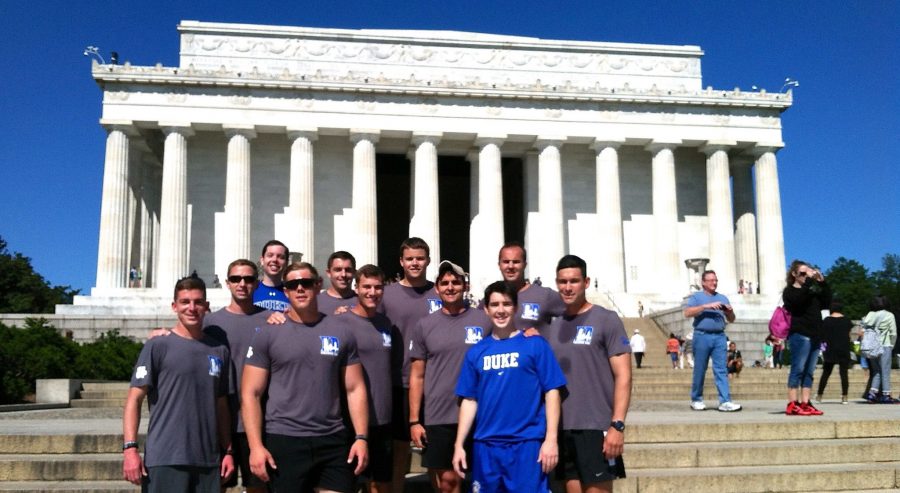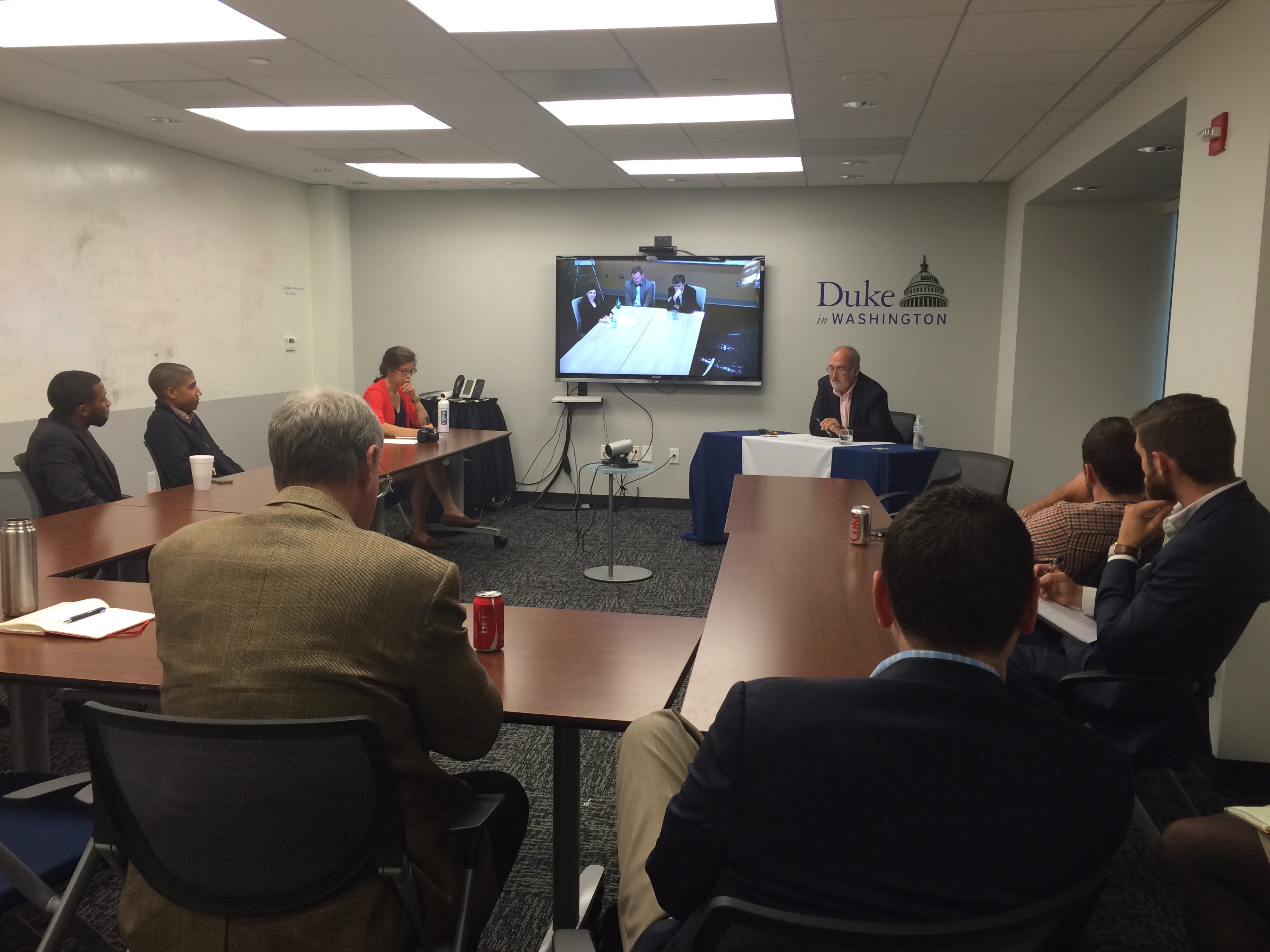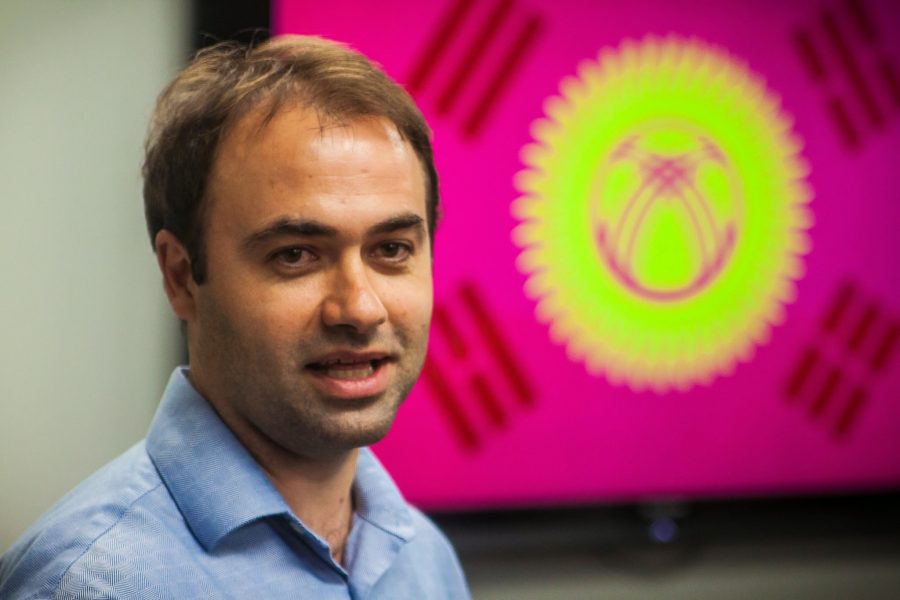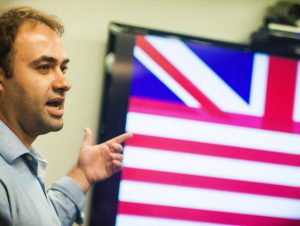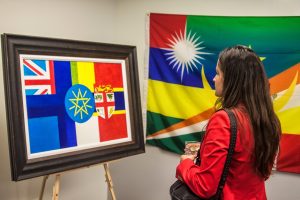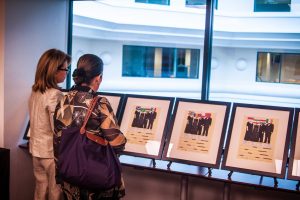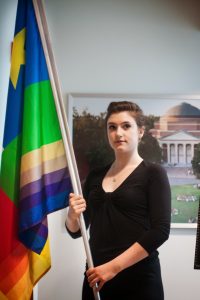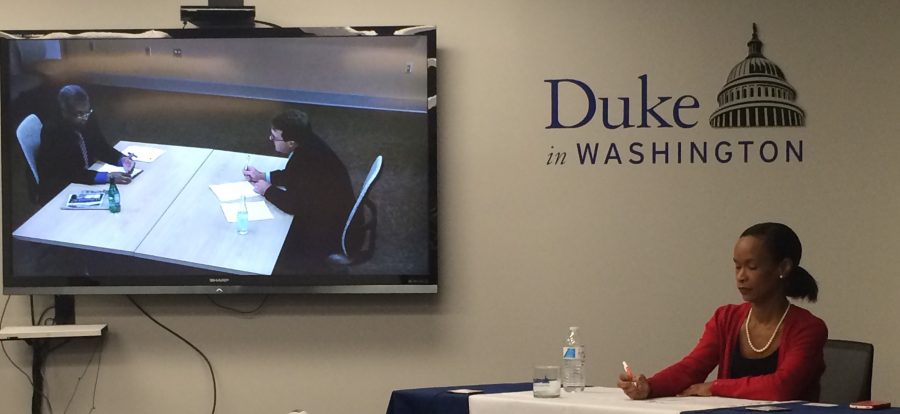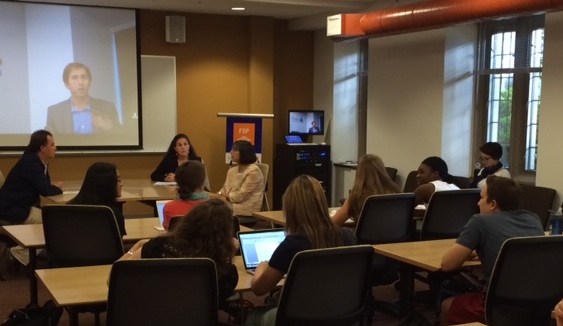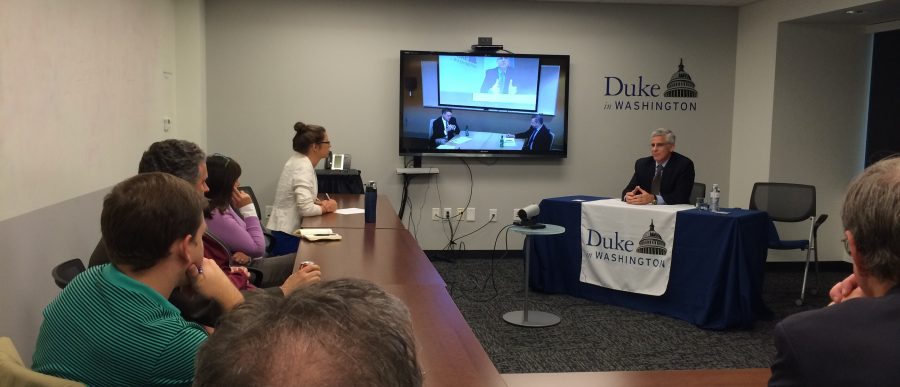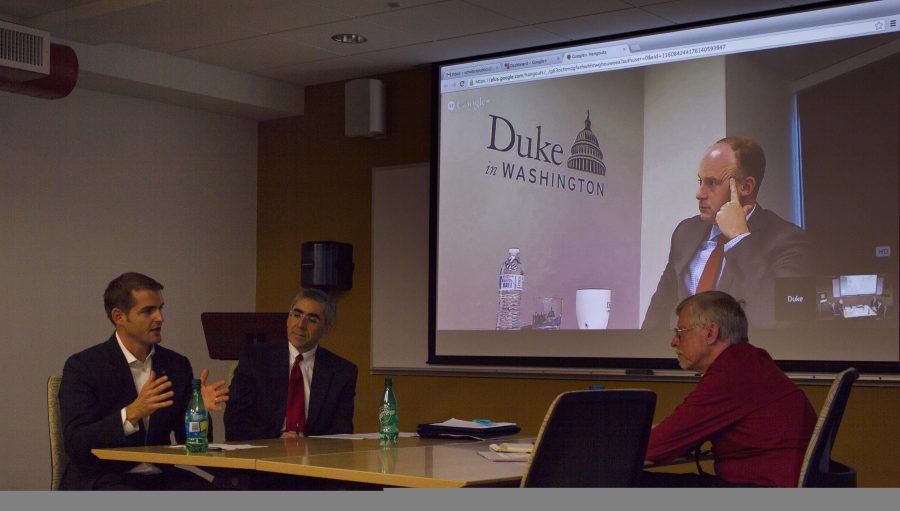The 2014 midterm elections constituted a Republican wave — a wave that was hard to stop and allowed Republicans to show they “learned their lesson” from the loss in the 2012 Presidential campaign. But what impact will these elections have on the 2016 Presidential campaign? Well, that’s still hard to tell.
That is according to Neil Newhouse (T ’74), a co-founder of polling firm Public Opinion Strategies and advisor to 2014 Republican Senate campaigns in Colorado, Iowa, Kentucky, Louisiana, Michigan and West Virginia. Newhouse was speaking at the final Duke Election Discussion Series last Thursday, where he was joined via teleconference by Sunshine Hillygus, associate professor of political science, and Nick Carnes, assistant professor of public policy.
For evidence of the wave, Newhouse says to look to states such as Maryland and Virginia. These states did not receive the same level of attention as say North Carolina or Colorado, but in the Maryland gubernatorial and Virginia Senate race, Republican candidates performed better than polling predicted.
But to Hillygus, these races are prime examples of flawed polling models.
“The pollsters called that the Republicans would take the Senate, so in a lot of respects they’ve gotten off the hook,” Hillygus said. “When in fact, they were really, really off.”
“Really, really off” means that the polling models — the assumptions and questions that pollsters apply to their samples to determine likely voters — over-estimated Democratic support by an average of five points, a much larger margin of error than in recent election cycles.
The models also predicted a higher voter turn-out, prompting Hillygus to call the Republicans “the most popular girl at a party no one attended,” drawing laughter from the audience.
And while turn-out can’t explain races like Mark Udall’s loss in Colorado — what Newhouse referred to as a “one-issue, negative campaign” — races like the North Carolina Senate race could have been different had voter turn-out been higher.
One thing campaigns did have in common across the election map, Carnes said, was “money, money, money.” How much money? As a reference point, candidate and campaign spending in 2014 was enough to run the 1980 Carter-Reagan presidential campaign 13 times over. That’s concerning to Carnes, because such a high cost of an election can limit who ends up on the ballot come election day.
“If a candidate can’t raise $1 million, $5 million by this time two years from now you’re essentially disqualified from running for the U.S. House,” Carnes said. “Right now, those candidates are already worrying about 2016. They’re going to phone banks in campaign headquarters, dialing for dollars and bracing for the next ‘most expensive election in U.S. history.'”
Those elections will be informed by the midterms that just took place. For Newhouse, the midterms revealed that “technology is not a strategy,” meaning Democrats still have to find ways to get their voters to the polls. The lingering question for him is whether the “Obama coalition” will turn out for a candidate that isn’t Barack Obama.
This will depend on Democrats reigniting the excitement of young volunteers — the “free labor” of Get Out the Vote campaigns — says Hillygus. “You push the restart button every election cycle. At the end of the day, the only thing we know in politics is that things change.”
The wrap-up discussion was the final installment of the Duke Election Discussion Series, a first-of-its-kind series connecting communities from campus and the nation’s capital to dive deep into issues central to the 2014 midterms. Each week, members of the Duke faculty teamed with alumni in Washington to lead discussions on topics such as healthcare, international relations, education, economic inequality and the State of North Carolina. These conversations then generated robust audience participation and critical examination of both the elections and the state of the issues themselves.
“This discussion series was a great example of the incredible expertise that Duke – its faculty as well as its alumni – has to offer on topics that we all see everyday on TV and in the newspaper. The chance to hear insiders break down these big, complex issues firsthand was a great opportunity for our students and the wider community that really brought the topics to life,” said Chris Simmons, head of OFR.
The Office of Public Affairs and Government Relations, along with the Forum for Scholars and Publics, would like to thank all the Duke University professors and Washington, D.C. experts that led the discussions, and all the members of the Durham and Washington communities that attended the sessions, in person and online.

